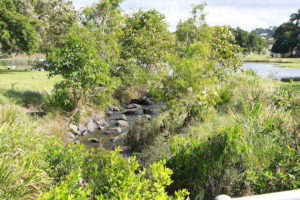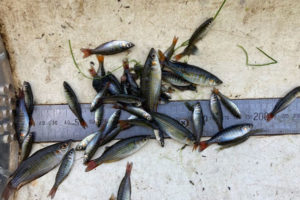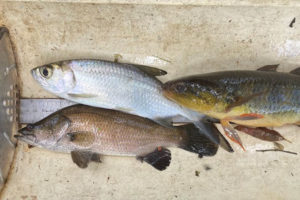Almost half of the fish species in the Mackay Whitsunday region can live in both freshwater and
saltwater environments. They move between these habitats for a variety of reasons including to
feed, reproduce and avoid predators. Ideally, fish should be able to move freely and easily between
different habitats. Unfortunately, barriers like dams, weirs, road crossings and other man-made
structures can prevent or inhibit the movement of fish throughout the catchment.
This is a concern for the fish population, and locally important species such as barramundi, sea
mullet, mangrove jack, jungle perch, tarpon and long-finned eels, which are significantly affected if
they’re unable to access breeding and feeding habitats. In many cases the fish are unable to
complete their life cycle and sustain a healthy and resilient population.
Reef Catchments, with funding from the Australian Government’s Reef Trust, contracted local fish
experts at Catchment Solutions to update a fish barrier prioritisation report from 2015. The current
study identifies 9,738 potential fish barriers, more than doubling the number found in 2015 (3974).
Only a small fraction of the increase was attributed to new barriers, with the bulk resulting from the
use of better satellite imagery, improved stream mapping and addition of wetlands to the study
area.
Identification of barriers
This study not only identifies the locations of barriers, but also includes an analysis to rank the
barriers in order of importance for fish passage. The barrier ranking process determined the extent
to which barriers affected the sustainability of fish communities, with barriers top ranked having the
worst impact on fish communities.
 Key criteria included:
Key criteria included:
- the available habitat upstream from the barrier
- the size of streams
- the proportion of intensive land use in the sub-catchment
- the number of barriers downstream
- the distance from the estuary, stream flow, habitat condition
- the physical characteristics of the barrier
Priority for remediation
Reef Catchments Conservation and Communities Officer Carlos Bueno, said that the purpose of the
prioritisation was to identify key sites for investment, which is an ongoing priority for Reef
Catchments and local governments.
The updated report identifies Stafford’s Crossing (O’Connell River), Vitanza Road (Saltwater Creek),
Marklands Wetlands, Flaggy Rock and Andromache Weirs, and many others, as top priority for
remediation. The next step is to fix the highly ranked barriers to improve fish movement and habitat
availability.
Catchment Solutions Fisheries Ecologist Trent Power, said that the current prioritisation took a big
leap forward in terms of being able to remotely identify barriers to fish passage. This will help Reef
Catchments, Mackay and Whitsunday Regional Council and other catchment groups focus their
funding on sites which will deliver the greatest benefit to local fish stocks.

